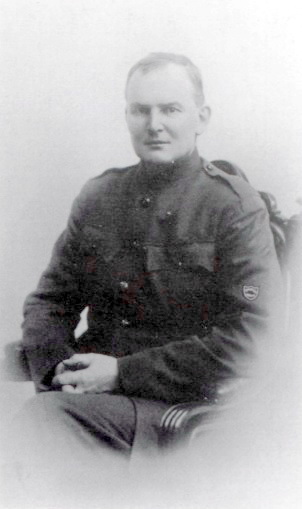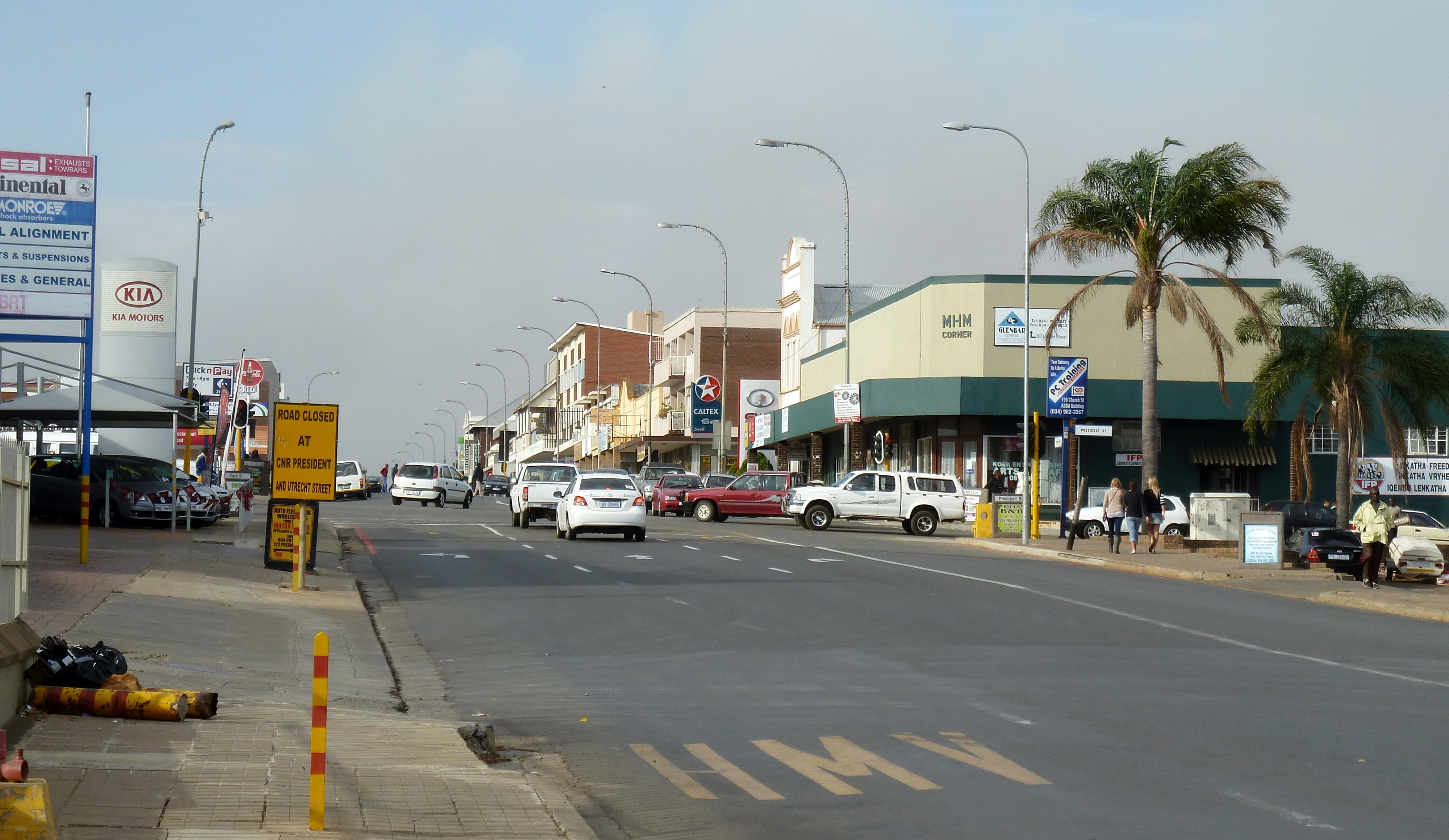|
Charles Theophilus Hahn
Charles Theophilus Hahn (also surnamed Headley; 1 March 1870 Wandsworth, London16 September 1930 Covent Garden, London), was an Anglican priest in South London, Yorkshire and Southern Africa. He was an amateur artist and botanical illustrator. He was the only son of Theophilus Sigmund Hahn and Helen Maxfield Hahn (née Walters), and grew up in the village of Headley in Hampshire. He was educated at Charterhouse and Pembroke College, Oxford, acquiring a B.A. in 1892 and an M.A. in 1895. After Oxford, he embarked on a career in the ministry and trained at the Leeds Clergy School in 1892-93. He was ordained a deacon in 1893 and a priest in 1894. He served curacies in Sydenham, Bradford, Almondbury and Barnsley between 1894 and 1907 and became Vicar of Dewsbury Moor in 1907.'' Crockford's Clerical Directory'' In 1908, he moved to the Diocese of Zululand in the Colony of Natal ( Natal Province from 1910), South Africa, where he served nine years as a missionary. After a year ... [...More Info...] [...Related Items...] OR: [Wikipedia] [Google] [Baidu] |
Charles Theophilus Hahn00
Charles is a masculine given name predominantly found in English and French speaking countries. It is from the French form ''Charles'' of the Proto-Germanic name (in runic alphabet) or ''*karilaz'' (in Latin alphabet), whose meaning was "free man". The Old English descendant of this word was '' Ċearl'' or ''Ċeorl'', as the name of King Cearl of Mercia, that disappeared after the Norman conquest of England. The name was notably borne by Charlemagne (Charles the Great), and was at the time Latinized as ''Karolus'' (as in ''Vita Karoli Magni''), later also as '' Carolus''. Some Germanic languages, for example Dutch and German, have retained the word in two separate senses. In the particular case of Dutch, ''Karel'' refers to the given name, whereas the noun ''kerel'' means "a bloke, fellow, man". Etymology The name's etymology is a Common Germanic noun ''*karilaz'' meaning "free man", which survives in English as churl (< Old English ''ċeorl''), which developed its de ... [...More Info...] [...Related Items...] OR: [Wikipedia] [Google] [Baidu] |
Dewsbury Moor
Dewsbury Moor is a district of Dewsbury, West Yorkshire, England. Historically part of the West Riding of Yorkshire, it lies to the west of the Dewsbury town centre. The population is around 5,650. Crime rates are higher than the national average. Dewsbury Moor Amateur Rugby league Football Club is based on Heckmondwike Road and has three playing fields nearby. The rugby club has turned out several notable rugby league professionals including Ryan Sheridan, Matt Diskin, Dean Lawford, Sam Burgess, Luke Burgess, George Burgess and Tom Burgess. There are two schools, ''Knowles Hill Infant and Nursery School'' on Knowles Hill Road, and ''Westmoor Junior School'' on Church Lane. The area was at the centre of national media and public attention in early 2008, when nine-year-old Shannon Matthews disappeared from near her home, in Dewsbury Moor, on the afternoon of 19 February 2008. After a 24-day search, she was found alive on 14 March 2008 at a flat in Batley Carr. Michael Don ... [...More Info...] [...Related Items...] OR: [Wikipedia] [Google] [Baidu] |
Anti-German Sentiment
Anti-German sentiment (also known as Anti-Germanism, Germanophobia or Teutophobia) is opposition to or fear of Germany, its inhabitants, its culture, or its language. Its opposite is Germanophilia. Anti-German sentiment largely began with the mid-19th-century unification of Germany, which made the new nation a rival to the great powers of Europe on economic, cultural, geopolitical, and military grounds. However, the German atrocities during World War I and World War II greatly strengthened anti-German sentiment. Before 1914 United States In the 19th century, the mass influx of German immigrants made them the largest group of Americans by ancestry today. This migration resulted in nativist reactionary movements not unlike those of the contemporary Western world. These would eventually culminate in 1844 with the establishment of the American Party, which had an openly xenophobic stance. One of many incidents described in a 19th century account included the blocking of a fun ... [...More Info...] [...Related Items...] OR: [Wikipedia] [Google] [Baidu] |
Pontefract
Pontefract is a historic market town in the Metropolitan Borough of Wakefield in West Yorkshire, England, east of Wakefield and south of Castleford. Historically part of the West Riding of Yorkshire, it is one of the towns in the City of Wakefield District and had a population of 30,881 at the 2011 Census. Pontefract's motto is , Latin for "After the death of the father, support the son", a reference to the town's Royalist sympathies in the English Civil War. Etymology At the end of the 11th century, the modern township of Pontefract consisted of two distinct and separate localities known as Tanshelf and Kirkby.Eric Houlder, Ancient Roots North: When Pontefract Stood on the Great North Road, (Pontefract: Pontefract Groups Together, 2012) p.7. The 11th-century historian, Orderic Vitalis, recorded that, in 1069, William the Conqueror travelled across Yorkshire to put down an uprising which had sacked York, but that, upon his journey to the city, he discovered that the cro ... [...More Info...] [...Related Items...] OR: [Wikipedia] [Google] [Baidu] |
Eshowe
Eshowe is the oldest town of European settlement in Zululand, historically also known as Eziqwaqweni, Ekowe or kwaMondi. Eshowe's name is said to be inspired by the sound of wind blowing through the more than 4 km² of the indigenous Dlinza Forest, the most important and striking feature of the town. Although the name is most likely to be derived from the Zulu word for the ''Xysmalobium'' shrubs, ''showe'' or ''shongwe''. Today Eshowe is a market town, with a 100 km radius catchment area, two shopping centres, a main bus station serving the hinterland, a major hospital, and several schools. History In 1860 Cetshwayo, then only a Zulu prince, built a kraal here and named the place Eziqwaqweni ''(the abode of robbers)''. A mission station was established at Eshowe in 1861 once permission had been obtained from the Zulu King Cetshwayo by Norwegian missionary, the Reverend Ommund Oftebro. Later the station was called the KwaMondi Mission Station ''(place of Mondi)'' aft ... [...More Info...] [...Related Items...] OR: [Wikipedia] [Google] [Baidu] |
Vryheid
Vryheid ( zu, IVryheid) is a coal mining and cattle ranching town in northern KwaZulu-Natal, South Africa. Vryheid is the Afrikaans word for "freedom". History After Boer farmers, who lived in the Vryheid area, had helped King Dinuzulu defeat his rival chief Zibhebhu for succession of the Zulu throne, land that they occupied was given to them by cession from the Zulu king along the banks of the Mfolozi River. On August 5, 1884 the Boers formed the ''Nieuwe Republiek'' (New Republic) with Vryheid as its capital and its sovereignty was recognized by Germany and Portugal. It was later incorporated into the South African Republic, but at the end of the Second Boer War the town and its surrounding area was absorbed into the Natal colony by the British. Vryheid is located along the Transnet Coalline. Education In 2007 Inkamana High School and Vryheid Comprehensive Secondary School were amongst several schools recognised as "historic schools". Funding of six million rand a year was ea ... [...More Info...] [...Related Items...] OR: [Wikipedia] [Google] [Baidu] |
Nongoma
Nongoma is a town in Zululand, KwaZulu-Natal, South Africa. It is the seat of the Nongoma Local Municipality. It is situated 300 km north of Durban and 56 km from Ulundi; it is surrounded by the Ngome Forest. It is a busy market town that serves a large surrounding area. It is assigned registration plate NND (Natal NDwandwe). This small town is also the home of King Bhekuzulu College, one of the popular boarding schools in the province. There are also TVET College, Mthashana TVET College Nongoma and KwaGqikazi Campuses. Royal palaces (Izigodlo) The area has six royal palaces belonging to the late Zulu King Goodwill Zwelithini: * Osuthu Royal Palace - The King lived here. * Khethomthandayo Royal Palace — His first wife, Queen MaDlamini, lives here. * KwaDlamahlahla Royal Palace — Queen KaMathe lives here. * Kwakhangelamankengane Royal Palace — Queen Mother Mantfombi kaSobhuza II -Zulu lives here. * Linduzulu Royal Palace — Queen MaNdlovu, lives here. * Eny ... [...More Info...] [...Related Items...] OR: [Wikipedia] [Google] [Baidu] |
Priest-in-charge
A priest in charge or priest-in-charge (previously also curate-in-charge) in the Church of England is a priest in charge of a parish who is not its incumbent. Such priests are not legally responsible for the churches and glebe, but simply hold a licence rather than the freehold and are not appointed by advowson. The appointment of priests in charge rather than incumbents (one who does receive the temporalities of an incumbent) is sometimes done when parish reorganisation is taking place or to give the bishop greater control over the deployment of clergy. Legally, priests in charge are '' temporary curates'', as they have only spiritual responsibilities. Even though they lead the ministry in their parishes, their legal status is little different from assistant curates. However, the term ''priest in charge'' has come to be used because the term ''curate'' often refers to an ''assistant curate'', who is usually a priest recently ordained who is not in charge of a parish — although ... [...More Info...] [...Related Items...] OR: [Wikipedia] [Google] [Baidu] |
Etalaneni
Etalaneni is a settlement and former missionary station in the uThungulu district of KwaZulu-Natal, South Africa South Africa, officially the Republic of South Africa (RSA), is the southernmost country in Africa. It is bounded to the south by of coastline that stretch along the South Atlantic and Indian Oceans; to the north by the neighbouring countri .... References {{DEFAULTSORT:Nkandla, Kwazulu-Natal Populated places in the Nkandla Local Municipality ... [...More Info...] [...Related Items...] OR: [Wikipedia] [Google] [Baidu] |
Natal Province
The Province of Natal (), commonly called Natal, was a province of South Africa from May 1910 until May 1994. Its capital was Pietermaritzburg. During this period rural areas inhabited by the black African population of Natal were organized into the bantustan of KwaZulu, which was progressively separated from the province, becoming partially autonomous in 1981. Of the white population, the majority were English-speaking people of British descent, causing Natal to become the only province to vote "No" to the creation of a republic in the referendum of 1960, due to very strong monarchist, pro-British Commonwealth, and anti-secessionist sentiment. In the latter part of the 1980s, Natal was in a state of violence between the Inkatha Freedom Party and the African National Congress, with violence subsidising soon after the first non-racial election in 1994.Taylor, Rupert. "Justice denied: political violence in Kwazulu‐Natal after 1994." African Affairs 101, no. 405 (2002): 473-508. ... [...More Info...] [...Related Items...] OR: [Wikipedia] [Google] [Baidu] |


.jpg)


